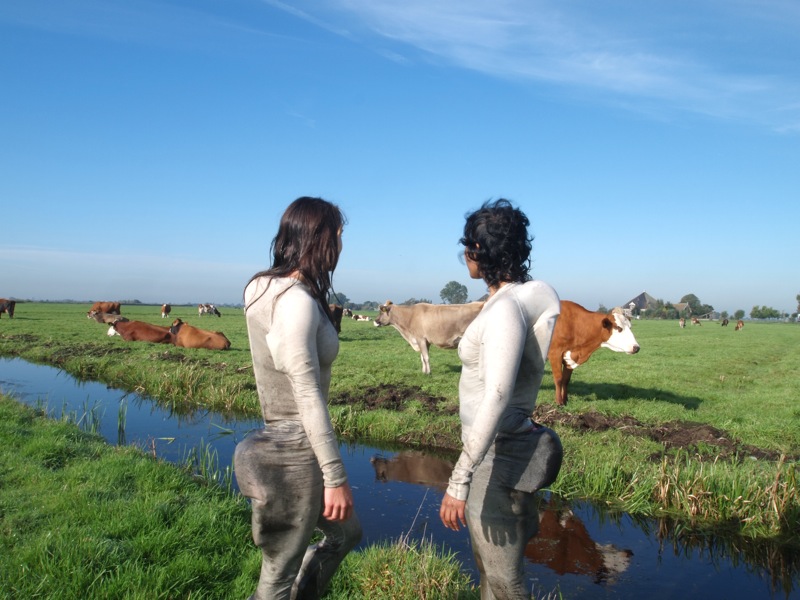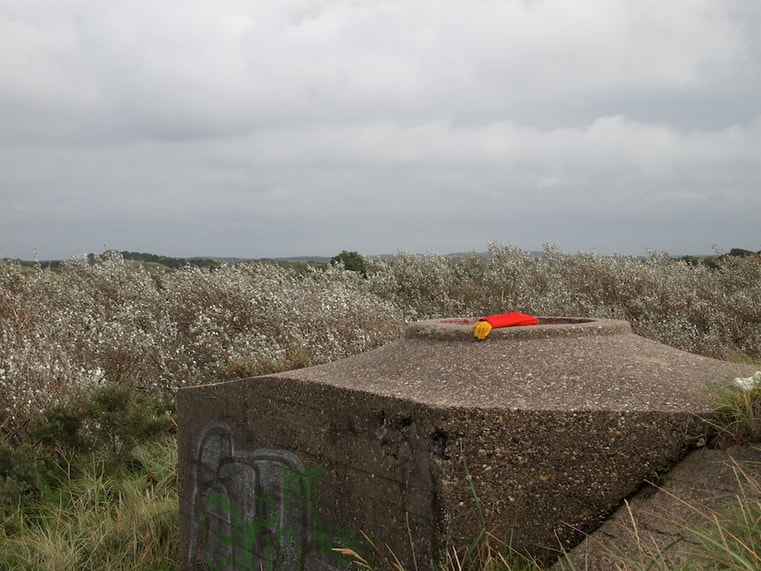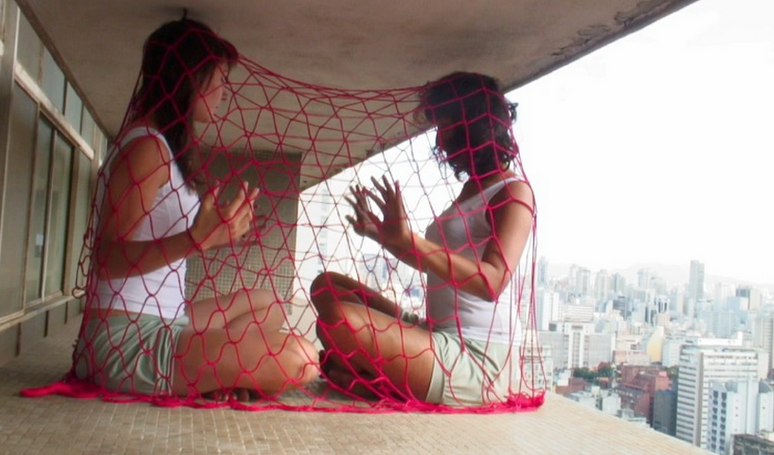COLLABORATIONS WITH JULIA KOUNESKI
My collaboration with Julia Kouneski is based on research into the relationship between ourselves and architecture: multi-sensorial negotiations between inorganic and organic structures.
SUPPORT SYSTEM
|
COPY IN TEXT |
SOUND MIRRORS2014 | HDV | 20mins & 48mins
Developed with Berta Roth | English |
As a continuation of this object archaeology, in our most recent collaborations, Sound Archaeology (2015) and Hand Mirror Sea (2015), we take the idea of a type of sensing archaeology to Folkestone, England. Here, we encountered “dinosaur” technology – Sound Mirrors erected on the English coastline to detect enemy aircraft during World War II. These concrete, concave structures face the sea, rather like vertical sundials; they absorb sound, wind and sea spray. We decided to face these 20th century structures to see what we could mine from these neglected defence structures. Imagining we could use our sensing bodies to connect with the past, with the voices and sounds these objects might have stored in their own “memory”, we experimented as sound archeologists and asked the monument to reveal its history. |
PERFORMANCE FOR COWS2010 | HDV | sound | 12min
single-channel projection | dimensions variable performance with Julia Kouneski | Netherlands |
Following on from our collaboration in Brazil, we pick up our experiential investigation in The Netherlands, a land mass situated below sea-level.
We immersed ourselves within the sloot network, integral to the Dutch polder, in an attempt to integrate with the landscape. During this process of propelling ourselves through the water, we realised that our actions were witnessed by a herd of cows, who were inquisitive bystanders to our event. |
IJMUIDEN2013 | HDV | sound | 6min
single-channel |
Monuments mark time; they are placed in specific locations as objects to enable us to remember people or events. They also help us recall events from the past, although in the case of some, they become anachronisms in the landscape. We vaguely remember their purpose: were they used to help defend us during the war? Which war and who was our enemy?
As time passes, these less grand monuments begin to represent the old, and their function unravels as we look to newer structures. Just as the threat of thermonuclear attack waned in the latter part of the 20th century, most bunkers were decommissioned, offered up for sale or turned into museums. Our series of photographs On Site from IJmuiden, Netherlands (2010) are remnants from our exploration and ‘mining’ of WWII bunkers, which became a type of archeology of the objects that we carried out with our sensing bodies. As a noun, site means ‘a place where something is constructed or has occurred’ (the site of the battle; the concrete is mixed on site) it becomes a locus for a particular position or place where something occurs or is situated. |
SCALING COPAN2007 | DV | sound | 12min
single-screen projection in purpose-built box | dimensions variable |
Our collaboration began in São Paulo, Brazil, where we researched the experiential works of Lygia Clark via collaborative re-creations. Through this direct research process, we became interested in a senso- rial and embodied experience of the city through its material and architecture. This led to our video and performance, Scaling COPAN (2009), in which we scaled the length of the 22nd floor of the Oscar Niemeyer-designed COPAN Building (1966), one of Brazil’s largest buildings. In this work, we draw atten- tion to the fragility and scale of our bodies in relation to this massive Modernist structure. |
SENSITISING2005 | DV | 46mins
Dutch, English and Hungarian with English subtitles with Richard Wank |
My collaborative practice with Julia Kouneski began in 2009 when we met in Rio de Janeiro through a shared desire to research the work of Brazilian artist Lygia Clark in order to inform our own artistic practices. After meeting, with access to only text and image-based documentation of Lygia Clark’s body of work, we identified the need to directly experience the multi-sensorial potential of Clark’s works, in order to understand her claim that these could have transformative effects on participants. We began by creating our own version of Lygia Clark’s Relational Objects, using simple materials we gathered from shops in the city of São Paulo.
Here, we used these objects to form a series of live experiments, or propositions we set for ourselves. Through this direct research process, we became interested in a sensorial and embodied experience of the city through its material and architecture. Over the course of a week, these experiments acted as the mental and physical preparation for a live event that altered our perception and physiological state through acting out (and recording) a physically demanding, even dangerous act. |


